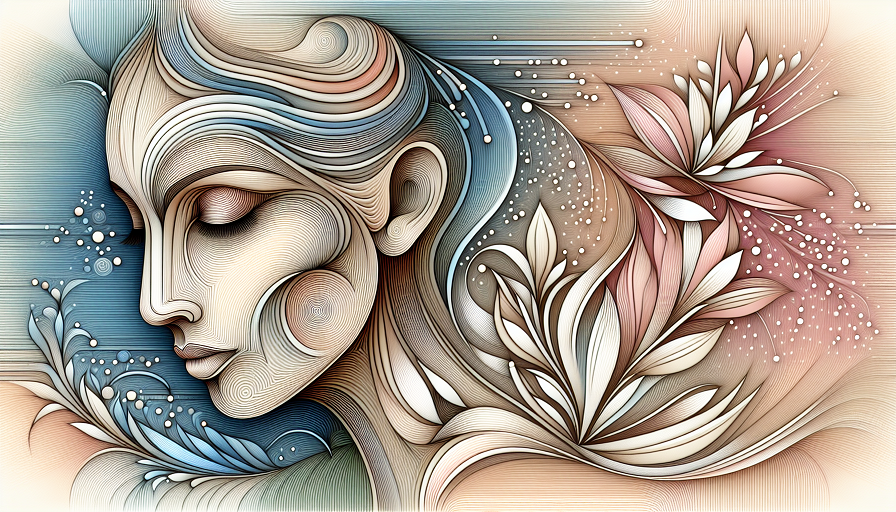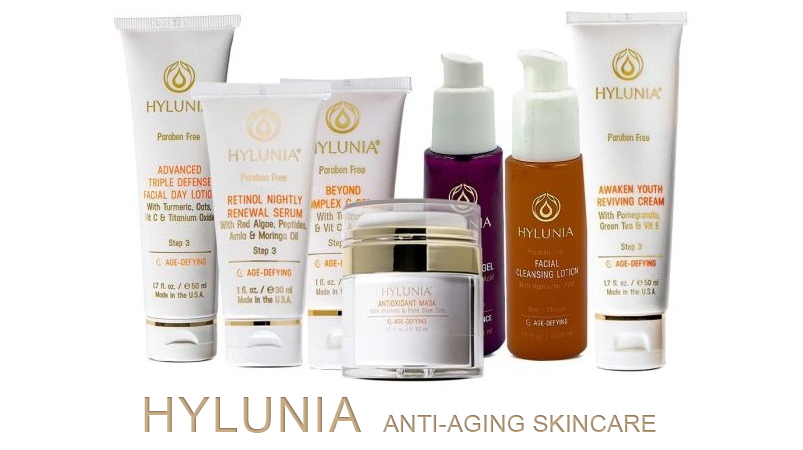
Rosacea can feel like a tricky skin condition to manage. One day, your skin’s looking calm and clear; the next, it’s red, inflamed, and sensitive to the touch. Rosacea isn’t just a matter of blushing easily—it’s a chronic skin condition that requires a little extra care and awareness.
Contents
What is Rosacea?
Rosacea is a common skin condition that causes redness, visible blood vessels, and sometimes bumps that can look similar to acne. It typically affects the face, especially areas like the cheeks, nose, forehead, and chin. While rosacea can appear at any age, it most commonly affects adults over 30 and tends to be more common in fair-skinned individuals.
Types of Rosacea
There are four main types of rosacea, each with unique symptoms. Understanding your type can help you find treatments that suit your skin’s needs.
- Erythematotelangiectatic Rosacea: This type is characterized by persistent redness and visible blood vessels.
- Papulopustular Rosacea: Often mistaken for acne, this type includes redness with bumps and pus-filled blemishes.
- Phymatous Rosacea: This rarer type leads to skin thickening, often around the nose, causing a bumpy, enlarged appearance.
- Ocular Rosacea: This type affects the eyes, causing redness, dryness, and irritation. It may accompany skin symptoms or occur on its own.
Causes of Rosacea
The exact cause of rosacea is still unknown, but research points to a combination of genetic, environmental, and immune system factors. While rosacea isn’t fully understood, certain factors can make some people more likely to experience it.
Genetics
If rosacea runs in your family, there’s a higher chance you may develop it too. Genetics can play a role in how sensitive your skin is and how your body responds to inflammation.
Immune System Response
People with rosacea often have an overactive immune response. This means their skin reacts more strongly to environmental factors, leading to inflammation and redness.
Environmental Triggers
External factors like sun exposure, stress, and certain foods can trigger rosacea flare-ups. Understanding these triggers can help manage the condition and reduce symptoms.
Common Triggers for Rosacea Flare-Ups
Learning what triggers your rosacea is a key part of managing it. While triggers vary from person to person, some common ones tend to set off flare-ups. Here’s a look at what might be making your rosacea worse.
Sun Exposure
UV rays can be a major rosacea trigger. Even a short time in the sun without protection can lead to redness and irritation. Sunscreen is a must for rosacea-prone skin.
Spicy Foods and Hot Drinks
Hot or spicy foods and beverages can cause flushing and worsen rosacea. This includes everything from hot coffee to spicy curries. Opting for room temperature or cool alternatives can help reduce the chance of a flare-up.
Stress
Emotional stress is a big factor for many people with rosacea. Practicing relaxation techniques, like deep breathing or meditation, can help keep stress in check and prevent flare-ups.
Alcohol
Alcohol, particularly red wine, can cause facial flushing in many people with rosacea. If alcohol is a trigger, consider limiting your intake or opting for other beverages.
Harsh Weather Conditions
Cold wind, heat, and humidity can all trigger rosacea symptoms. Protecting your skin from extreme weather by wearing a scarf, hat, or sunscreen can make a difference.
Gentle Skincare Solutions for Rosacea
When it comes to rosacea, gentleness is key. Harsh products can aggravate symptoms, so choosing gentle, soothing skincare is essential. Here are some skincare tips and product recommendations to help manage rosacea.
Choose a Gentle, Non-Foaming Cleanser
Avoid cleansers with harsh ingredients like sulfates, which can strip your skin of natural oils. Look for non-foaming cleansers with soothing ingredients like aloe vera or chamomile. Wash your face with lukewarm water to prevent additional irritation.
Use a Fragrance-Free, Hydrating Moisturizer
Fragrance can be irritating for rosacea-prone skin. Stick to a fragrance-free, non-comedogenic moisturizer that contains ingredients like ceramides and hyaluronic acid to keep your skin barrier strong and hydrated.
Apply a Mineral Sunscreen
Sun protection is crucial for managing rosacea. Choose a mineral sunscreen with zinc oxide or titanium dioxide, as these are less likely to cause irritation than chemical sunscreens. Apply it daily, even on cloudy days, to protect your skin from UV damage.
Best Ingredients for Calming Rosacea
Some ingredients are especially soothing for rosacea and can help reduce redness and inflammation. Look for these in your skincare products to keep your skin calm and comfortable.
Niacinamide
Niacinamide is a form of vitamin B3 known for its anti-inflammatory properties. It can help reduce redness, improve the skin barrier, and even out skin tone. Niacinamide is well-tolerated by most skin types, making it a great choice for rosacea.
Centella Asiatica (Cica)
Centella Asiatica, or “cica,” is known for its skin-healing and anti-inflammatory properties. It helps soothe irritation, reduce redness, and support the skin barrier, which is particularly beneficial for rosacea-prone skin.
Green Tea Extract
Green tea extract is a powerful antioxidant that calms inflammation and protects the skin from environmental stressors. It’s gentle enough for sensitive skin and can help reduce redness over time.
Aloe Vera
Aloe vera has natural soothing and hydrating properties that make it ideal for rosacea. It can calm redness, reduce inflammation, and provide lightweight moisture without clogging pores.
Ingredients and Products to Avoid with Rosacea
While some ingredients can soothe rosacea, others can make it worse. Avoiding certain products and ingredients can help prevent flare-ups and keep your skin comfortable.
Fragrance
Fragrances, both natural and synthetic, are common irritants. Choose fragrance-free products whenever possible to avoid unnecessary irritation.
Alcohol
Alcohol can be drying and irritating, especially for sensitive, rosacea-prone skin. Look out for it in toners and astringents, and choose alcohol-free options instead.
Strong Exfoliants
Harsh exfoliants like physical scrubs or high concentrations of acids can be too intense for rosacea-prone skin. If you need to exfoliate, opt for gentle exfoliants, like low-strength lactic acid, and use them sparingly.
Sulfates
Sulfates, commonly found in foaming cleansers, can strip your skin of its natural oils and cause dryness. Stick to sulfate-free cleansers to keep your skin calm and hydrated.
Building a Rosacea-Friendly Skincare Routine
Creating a skincare routine that supports your skin’s needs without causing irritation is essential for managing rosacea. Here’s a simple routine to help keep your skin balanced and comfortable.
Morning Routine
1. Cleanser: Use a gentle, non-foaming cleanser with soothing ingredients.
2. Moisturizer: Apply a fragrance-free moisturizer to lock in hydration and support your skin barrier.
3. Sunscreen: Finish with a mineral sunscreen that provides broad-spectrum protection.
Evening Routine
1. Cleanser: Use the same gentle cleanser to remove dirt and makeup.
2. Treatment: Apply a product with niacinamide or green tea extract to reduce redness and calm inflammation.
3. Moisturizer: Finish with a hydrating moisturizer to keep your skin barrier strong overnight.
Managing rosacea requires patience and gentleness. With the right products and a consistent routine, you can keep redness and irritation under control while keeping your skin healthy and happy.

